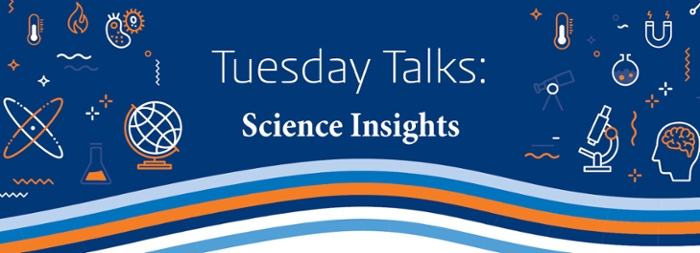Lezing | Tuesday Talks: Science Insights
What a glow in the dark squid tells us about the human gut microbiome
- Datum
- dinsdag 12 maart 2024
- Tijd
- Locatie
-
Gorlaeus Building
Einsteinweg 55
2333 CC Leiden - Zaal
- Atrium, 1st floor

Tuesday Talks: Science Insights is de maandelijkse dosis onderzoeksinspiratie van Leiden Science, van onze medewerkers, voor onze medewerkers en alle andere nieuwsgierigen.
De voertaal voor deze lezingenserie is Engels.
What a glow in the dark squid tells us about the human gut microbiome
In this upcoming ‘Tuesday Talks: Science Insights’, Ariane Briegel will tell us more about how we can learn more about our own gut microbiome by studying the host-microbe interact in a Hawaiian squid that glows in the dark.
Our microbiome
Microbes are the most abundant organisms on earth and impact all aspects of our lives. The human body contains a complex community of over 100 trillion microbial cells- our microbiome. These microbes play a key role in health and disease, but their small size make them difficult to study, and we are just beginning to understand the makeup and function of the multiple molecular machines that bacteria use to interact with other members of the microbiome, as well as with their host. However, this insight is essential to understand the complex interactions of our microbiome with potentially harmful pathogens.
Host microbe-interaction
Since the human microbiome is dauntingly complex, we study a naturally simplified system where one organism, the Hawaiian bobtail squid, interacts with only one species of bacteria. Once the squids hatch, the light-producing bacterium Vibrio fischeri in the surrounding seawater migrate toward and into the squid’s internal light organ, where they colonize and maintain a light-producing population for the lifetime of the squid. This makes the animal invisible for predators at night, as the animal is camouflaged against the moonlight shining from above. This binary host-microbe interaction is an ideal system to begin to understand the structural interplay between these organisms at the nanoscale. We use a combination of high-powered modern microscopes and newly developed workflows that enable us to directly observe this intricate interaction in three dimensions at the nanoscale.
Join this edition of Tuesday Talks: Science Insights!
Everyone who is interested in this edition's topic is welcome. Please let us know if you are attending.
I will join!About the speaker
Ariane Briegel is a professor at Leiden University. She has over 20 years of experience using cryo-electron microscopy to study bacterial and archaeal ultrastructure. The Briegel laboratory focuses on investigating how microbes sense and respond to their environment. In order to gain insight into the structure and function of the molecular complexes involved in these behaviors, the lab uses electron cryotomography and correlative microscopy methods.
Programme
The programme of the Tuesday Talks: Science Insights is:
| 15.45 hrs | Take a seat |
| 16.00 hrs | Introduction by dean Jasper Knoester |
| 16.10 hrs | Lecture by speaker, followed by Q&A |
| 17.00 hrs | Drinks |
About Tuesday Talks: Science Insights
Tuesday Talks: Science Insights is Leiden Science’s monthly dose of research inspiration from our staff, for our staff and all other curious minds. Every second Tuesday of the month from 16:00 hrs till 17:00 hrs, drinks and meet up afterwards till 18.00 hrs.
